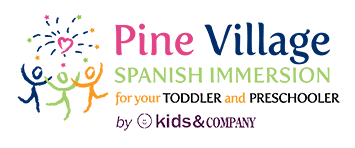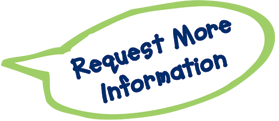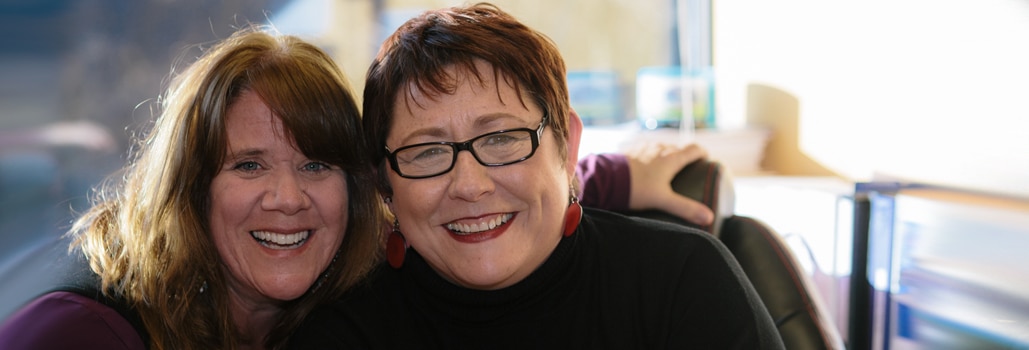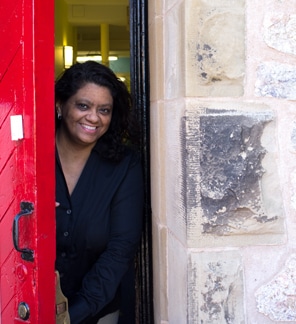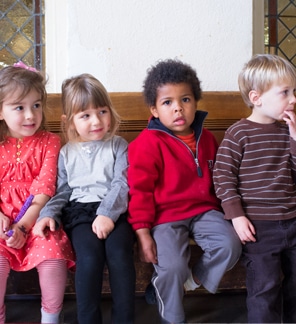Pine Village is a respected Spanish Immersion School started by passionate folks who want to enrich lives.
The Story of Pine Village
Two women had a dream…
Pine Village began in 2001 in a small brick cottage tucked away on the wooded grounds of Mt. Saint Joseph’s high school in Brighton, Mass. After spending many years as family child care providers in Brighton, co-founders Emma LaVecchia and Brid Martin had the opportunity to combine their compatible teaching styles, methods and programs to open a preschool for twenty-four children. While nerves and some apprehension crept in at times, their excitement and enthusiasm permeated the walls. Many of their families from their family child care programs made the move with them, with several new families joining us from the surrounding community.
Coming to work every day was a gift. Pine Village was a special place where children were uninhibited, and families felt supported and in a community where they leave their child and go to work worry free. Teaching children in this environment – giving every individual child a day filled with rich educational experiences, laughter, love and unconditional acceptance – was never considered “work”. Each and every child was greeted with a hug and a loud “Welcome! How are you today?” And every parent dropped off their child with the confidence and understanding that their child was special among all others, that their child was going to leave preschool that day with a new seed planted, that the natural excitement and enthusiasm each child holds instinctively was harnessed and encouraged.
The Spanish Language Component
Bilingualism has always been a large part of what sets Pine Village apart from other preschools. It is equally as important and integral to who we are, as our philosophy and methodology. There are two things that families who visit PVP for the first time notice: First, the warm and nurturing feeling with which every visitor is greeted and experiences when they walk through the door. And, second, the Spanish language component. The fact that every teacher speaks only Spanish in the classroom to every child is a remarkable and unique aspect of this program.
In the early years we worked our way through many stages and levels of bilingualism. We were quizzed and questioned by hundreds of parents who either did not understand, trust, or believe in our commitment to a second language program.
But from the inception of our little schoolhouse in Brighton, Spanish was a natural and organic part of our program. One of our key partners and staff members, one of the original teachers of PVP, is a native Spanish speaker, and it was her natural instincts and talents as an educator that brought the second language component into our preschool. Hearing a second language being spoken in the classroom captivated the children. They were excited about learning a new way to communicate. Every child quite instinctively seemed to comprehend and respond in Spanish when prompted within a few weeks.
Witnessing how quickly this natural ease and ability to comprehend and communicate in a second language was for the children, we realized we had an obligation as educators to research and put structure to this aspect of our school.
We began to study language, how children acquire a second language, how children develop language skills when raised in a bilingual environment, how to introduce a second language to children. For many years we were faced with challenges and questions about our second language program, questions that were difficult to answer. But we always knew instinctively that a second language program for English-speaking children was not only a gift, but a unique opportunity which we needed to explore, learn about and create.
We spoke to and learned from language specialists and academics; we participated in various studies of bilingual and monolingual children; and, most importantly, we watched and learned from the children in our own program and how they acquired a second language. As the years passed we became more and more confident in our belief that completely immersing a child in a second language is the most efficient and productive method of teaching a second language. Our ratios of Spanish to English increased from 50:50 to 80:20 to the current, full immersion model over the years.
Growth
Since that first school was established in Brighton, Pine Village has continued to grow. Our second location was established in 2003 in the village of West Newton. We have continued to open a new school every two years, with our most recent school being the second Jamaica Plain location on Centre St. (located on South St. as of January 2017) – established largely in part due to the enthusiastic demand of local parents.
Although we continue to grow, it remains essential to us to keep the feeling of a small, neighborhood school in each of our locations. Our 2013 growth has therefore been to establish several new administrative staff positions – Community Director, Senior Director of Communications and Enrollment, Controller, and Facilities Manager – which now join our Curriculum Director and Enrollment Coordinator in establishing consistent practices across all the Pine Village locations, thereby allowing our school directors and teachers to focus on what has always been the most important part of Pine Village: the kids.
